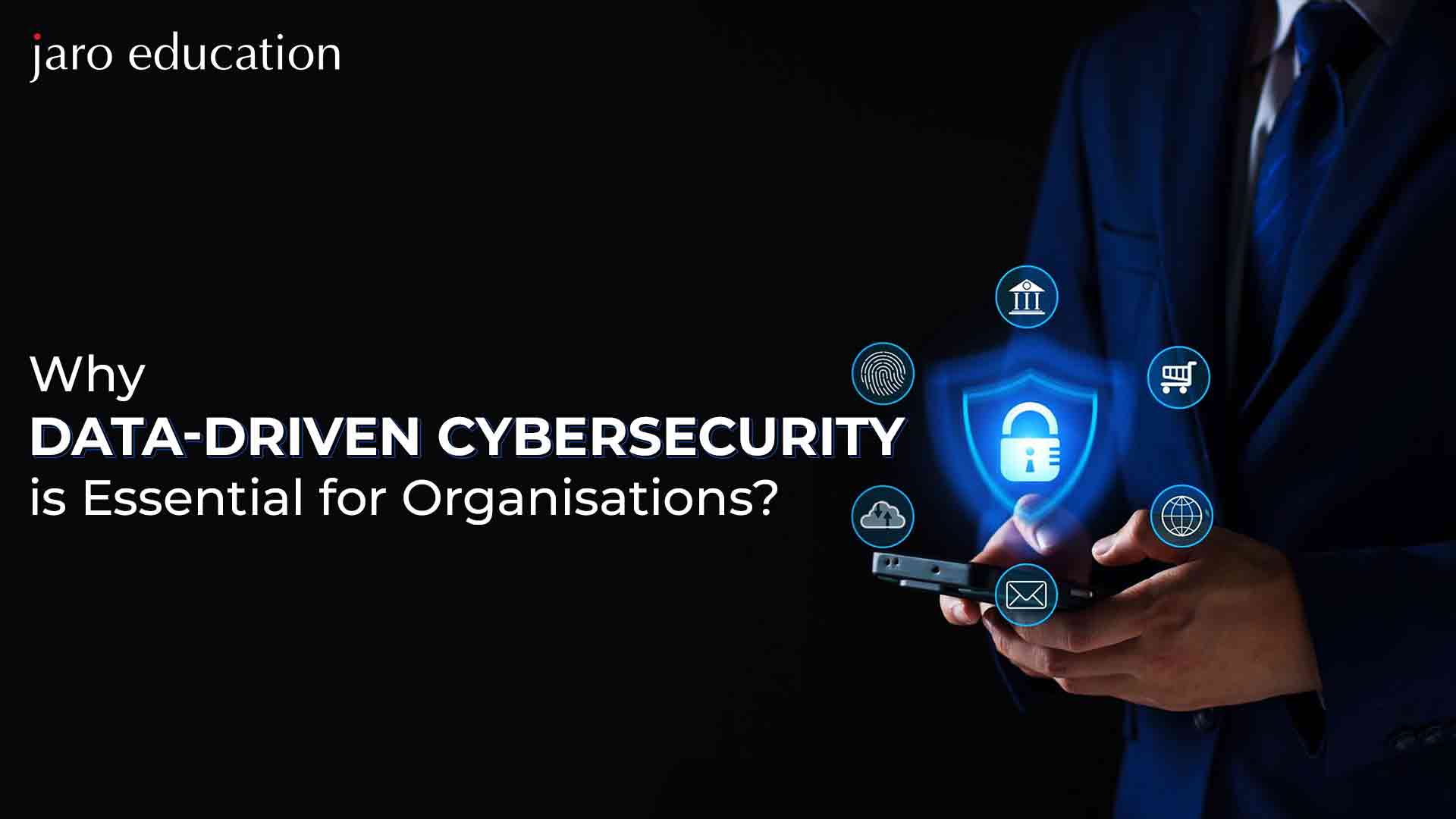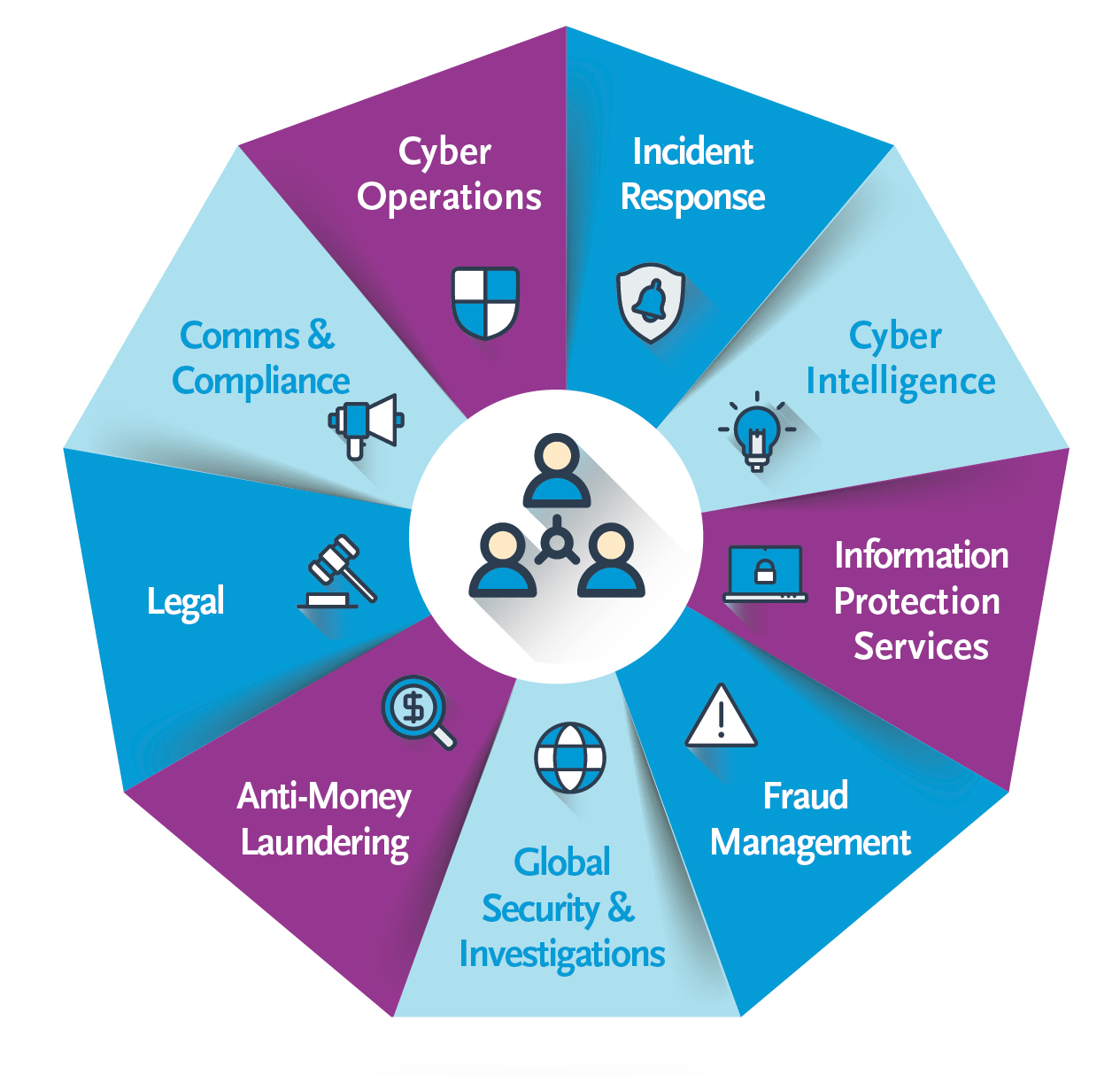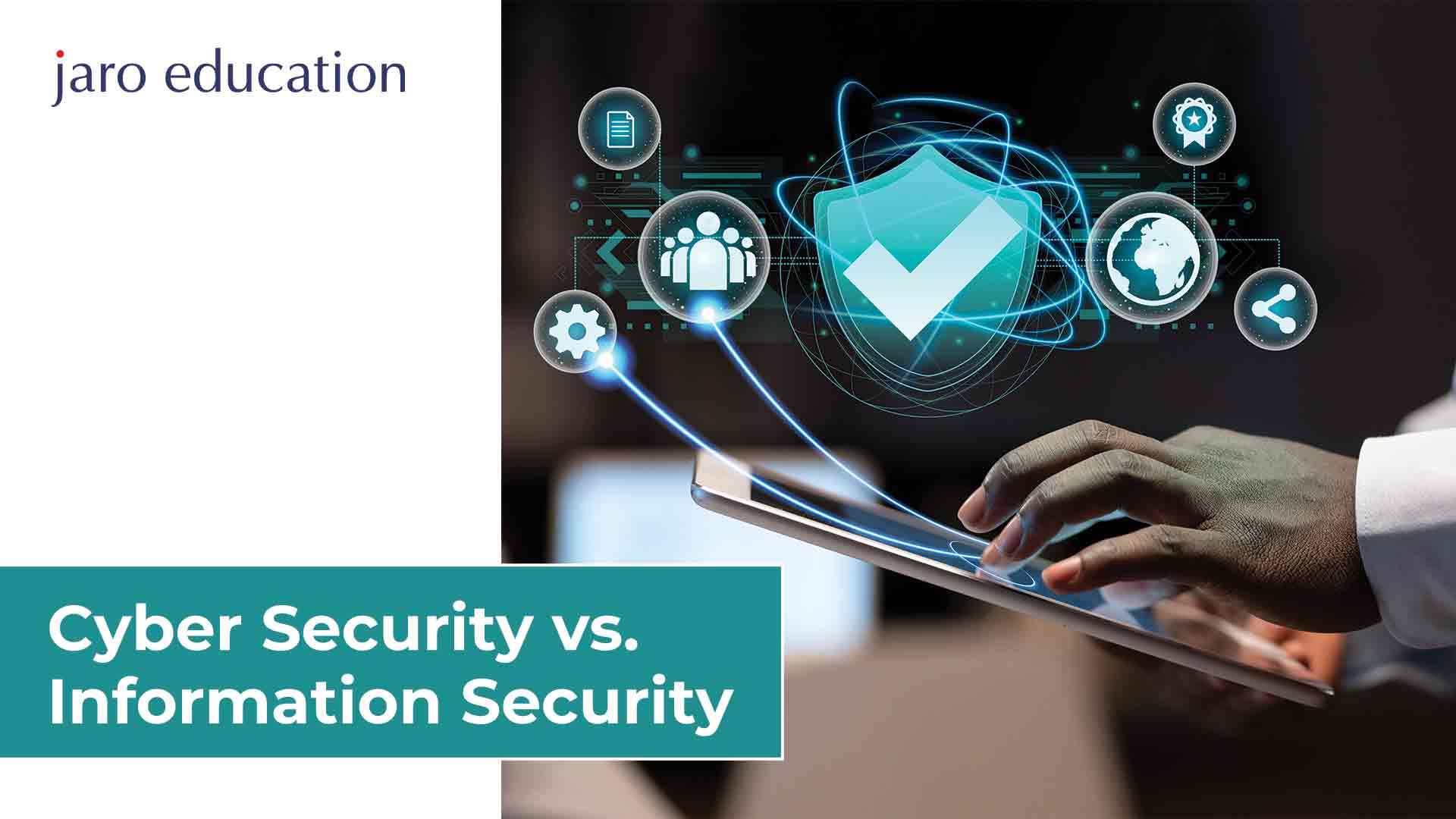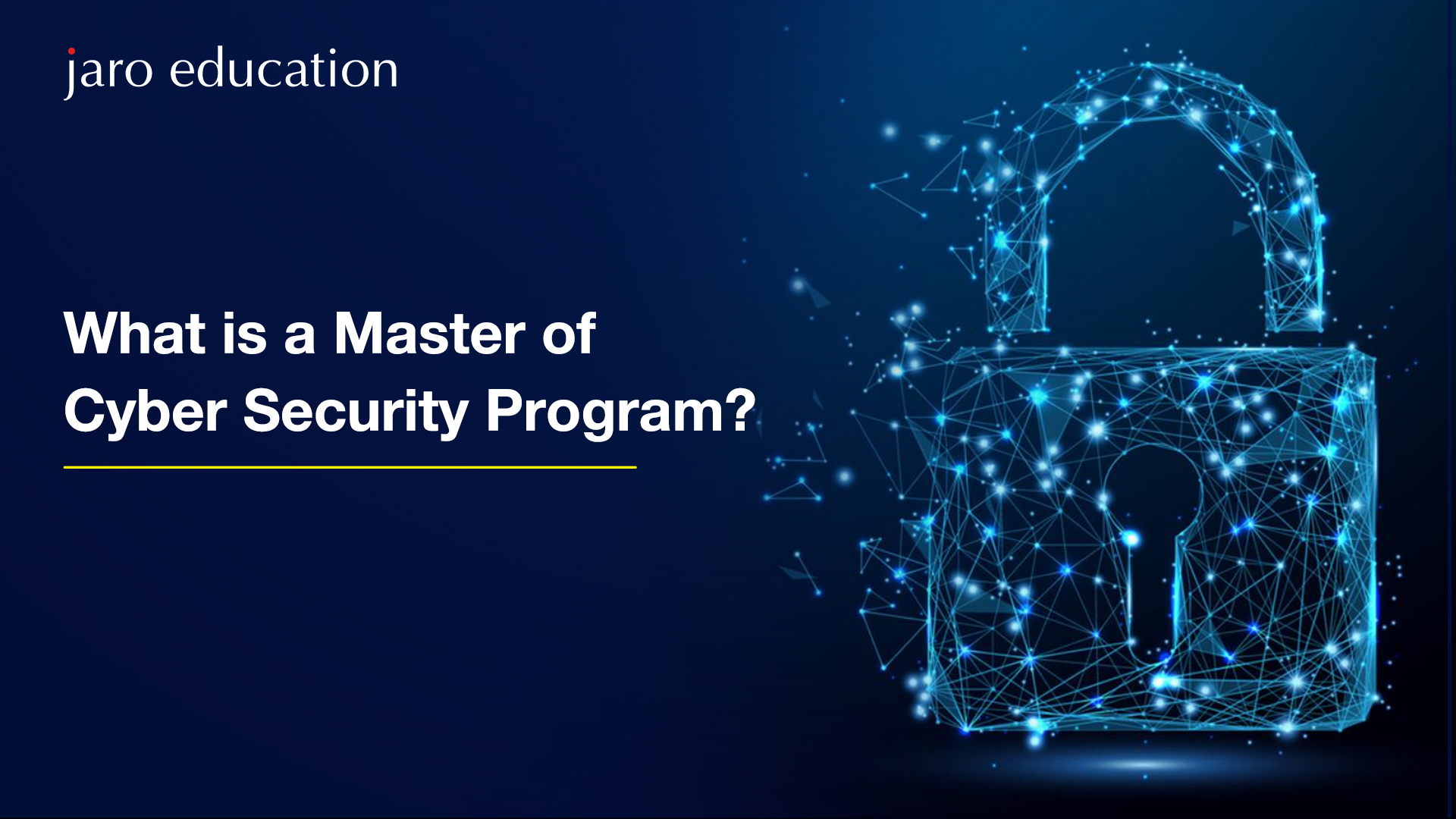
Data-driven cybersecurity involves data analytics, machine learning and artificial intelligence techniques to protect the sensitive information of an organisation against security threats. The purpose of this method is to utilise data to find patterns and trends that may help influence cybersecurity management. With that, organisations can use this information to detect and protect against cyber attacks more efficiently. The gathering and analysis of data about vulnerabilities and cyber threats are important parts of data-driven cybersecurity. This data can be used to identify trends and patterns that can help companies understand the sorts of threats they face and the tactics attackers employ to try to penetrate their defences.
For enhanced productivity, organisations are shifting toward cloud platforms, which may often lead to an increase in cybersecurity attacks. This has created a space for techno-management professionals to mitigate these problems. The PG Certificate Programme in Cyber Security Management and Data Science from IIM Nagpur gives individuals the opportunity to have in-depth knowledge of the cybersecurity landscape. This programme also aids professionals in gaining leadership skills, managing vulnerabilities, and adopting new technologies. With the increasing importance of cybersecurity in today’s digital landscape, this programme can provide individuals with the necessary skills and knowledge to excel in the field.
What is the importance of data-driven cybersecurity?
With time, the importance of data-driven cybersecurity has been rising for two reasons:
- The current organisational data network is more complicated than ever. To satisfy the current distant workforce requirements, IT teams are deploying dispersed IT infrastructure, which means cybersecurity is no longer an exclusive region on a company’s perimeter.
- The variety and complexity of digital dangers that an organisation must deal with are increasing. As technology advances, fraudsters develop increasingly complex tactics for assaulting enterprises in search of valuable data.
Table of Contents

*Boozallen
Organisations are investigating new options to obtain a thorough awareness of the sorts of assaults they are encountering and building new frameworks to preserve their organisational data in order to successfully fight against these threats. To mitigate cybersecurity threats, organisations must develop and incorporate an excellent and adaptive cyber shield. These include:
- Re-assessing threats to make sure that mitigations are risk-ranked
- Solving the highest risks on the basis of priority
- Focusing on reducing the core problem that allows malware and hackers to gain first entry to environments.
- Determining the threat’s efficacy
- Using local knowledge and data to determine the reasons and rank the fundamental threats.
Organisations may use data-driven cybersecurity to proactively detect and respond to possible attacks. This allows them to gather the information needed to establish an effective cyber resource attack management plan and reduce the risk of cyber attacks.
How to establish data-driven cybersecurity in organisations?
Data-driven cybersecurity comprises organisations making security judgements based on real-time data. This entails including an in-depth examination of current trends, as well as potential hazards and their core causes, existing tactics, and whether these methods are enough to handle high-priority topics. Creating a data-driven defence needs continuous work and is a continual activity that evolves in tandem with the threat environment. Some significant advantages of data-driven cybersecurity are as follows:
Improving the articulation of risks
Understanding threats requires the security teams to communicate the threats and measures to executive teams. This implies they have statistics to back up their approach, which will make a significant difference when requesting financing from leadership.
Getting a thorough understanding of existing threats
Businesses can acquire a better knowledge of existing cyber attacks and root causes by using a data-driven cybersecurity strategy. Cybersecurity threats like unpatched software, engineering scams and remote services are increasingly being identified as the top core causes of data breaches. This is totally altering the way security teams within organisations prioritise threats in order to construct a better defence structure.
Developing a more comprehensive cybersecurity strategy
Security plans are generally centred on technology or compliance, leaving out the security issues related to user behaviour. When businesses employ a data-driven strategy, they may find common underlying issues such as phishing, weak passwords, and bad browsing patterns. As a result, security teams must develop a plan that includes a balanced mix of employee awareness programmes, hands-on instruction, and technology controls.
What are the reasons for data-driven cybersecurity failures?
In recent times,there have been more cyber attacks than the previous years. Though organisations are investing billions in cybersecurity measures, there is a misalignment between how companies perceive risks and the actual risk that exists. The reasons for failures are as follows:
No clarity on the root causes
If we take the medical example, painkillers are given to patients to reduce the pain, but they cannot cure the core cause of inflammation. Likewise, security teams tend to focus on the symptoms and overlook the factor of why it happened in the first place. For instance, malware is considered a risk that occurred due to a security incident. But how the malware got into the system is the question that no one really asks.
Communication problems
Communication is the primary source that makes or breaks a security culture. To guarantee that staff follow the best rules, processes, and practices, security teams must successfully engage employees and earn their trust. It is something that cannot be done without good communication. When obtaining executive approval for security projects, being able to convey cybersecurity threats to top management in a language they understand is critical. Unfortunately, studies reveal that there is a significant skills gap among cybersecurity experts, particularly those with communication and leadership abilities.
Trying to prevent the wrong threats
People learn about new cyber threats in the media every day. Some of them can be important to business, while others may not. Some of the threats can be plain marketing gimmicks. Security teams might become weighed down by all the noise, developing a false picture of risk and focusing their resources on the wrong things.
Numerous priorities
Cybersecurity teams are often overburdened. Some initiatives exist to keep the company happy, while others are the personal interests of security officials. As a result, non-critical items take precedence over important items. Another important factor is compliance. Administration is always under pressure to execute compliance activities, which can give the firm a false feeling of security. Safety checklists also assign identical weight to all regulations, which implies that needless effort and resources may be expended on measures that the company does not require.
Flawed risk evaluation
Cybersecurity teams are susceptible to their own prejudices, and their judgement is frequently influenced by headlines, social media discussions, regulatory demands, and other factors. Every day, security teams utilise various security instruments that may create up to 1,000 notifications (alarms). Because it is hard to track so many signals at once, security personnel experience alert fatigue, which leads to poor risk assessment and prioritisation.
Final Thoughts
Cybersecurity is more critical than ever in today’s cyber connected world. Cyber dangers threaten organisations across industries. These cyber-threats can affect not only the company’s reputation but also its economic line, trapping them in the dreaded data theft trap. However, as cyber assaults get more sophisticated, firms are implementing more sophisticated cybersecurity plans that use intelligent data to produce better tactics and minimise the total risk of data loss.
If you’re interested in being a part of an organisation’s cybersecurity team, you need to hone relevant skills. For that, you can participate in IIM Nagpur’s PG Certificate Programme in Cyber Security Management and Data Science Programme. This 12-month course allows mid-range and senior managers with entire cybersecurity knowledge. Furthermore, the programme will provide you with peer networking opportunities, hands-on workshops through experiential learning and more.









